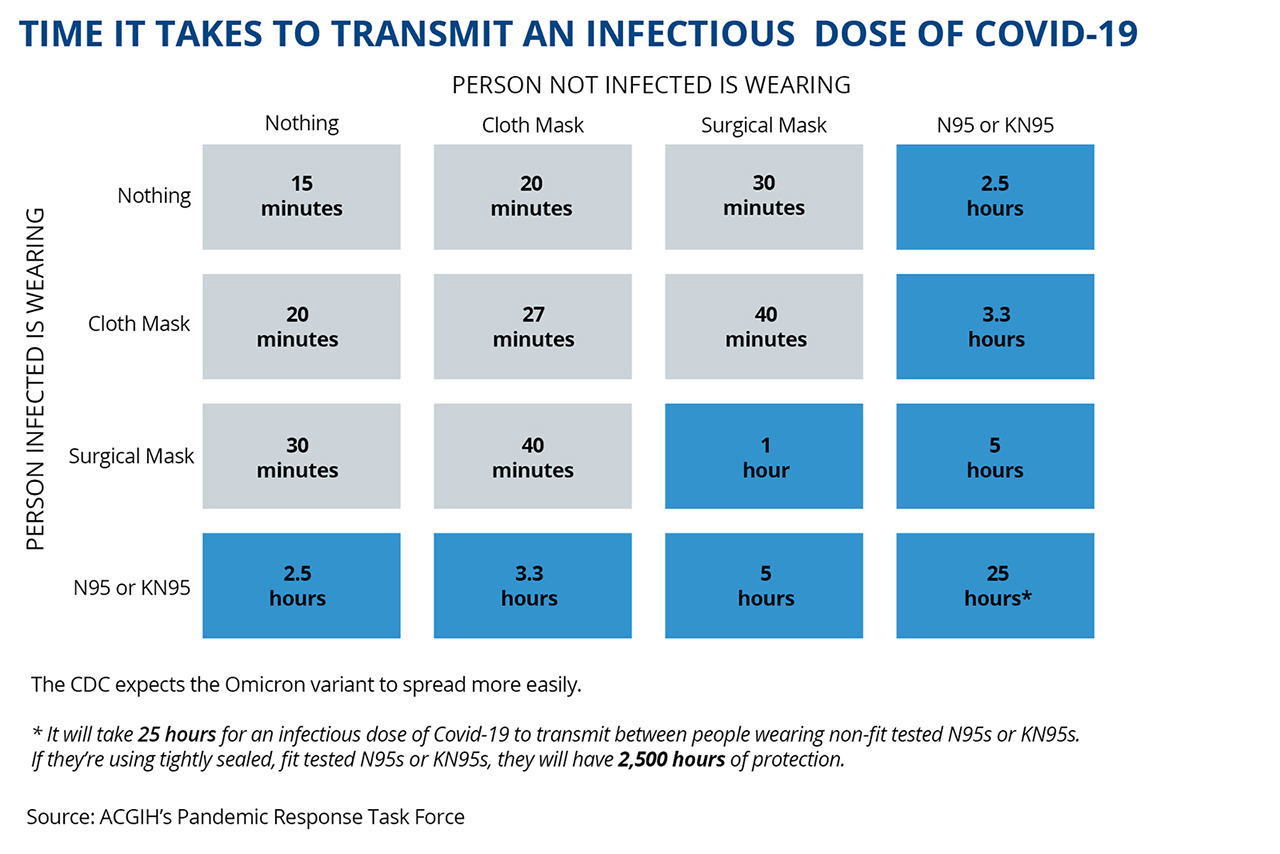
ARTICLE
How Well Are Masks Protecting Your Employees?
By Kady Olson | March 9, 2022
Read Time: 2 Minutes
As we move into the third year of the COVID-19 pandemic, new variants continue to challenge many of the controls we have established to protect our workers. Most recently, the highly contagious Omicron variant and its subvariants - such as BA.2 - caused a surge that broke records for the number of new daily cases. The US Centers for Disease Control indicate that the Omicron variant made up 95% of the cases in the United States at its peak.
What we know about Omicron is still limited. Originally identified in South Africa in November 2021, it was designated as a Variant of Concern by the World Health Organization based on concerns regarding the strain’s ability to escape immunity and its increased transmissibility compared to other variants. Since its detection in the United States in early December 2021, the Omicron variant spread rapidly, resulting in soaring case numbers, including breakthrough infections for those who have been fully vaccinated and boosted.
With these latest variants having a degree of success in evading immunity in the vaccinated, the use of face masks is as important as ever. The need for higher efficiency masks like N95 and KN95 among the general population has been highlighted by many safety advocacy groups, including one of the leading authorities on occupational and environmental health, the American Conference of Governmental Industrial Hygienists (ACGIH). Recently, ACGIH published a guide documenting the criticality of using a filtering facepiece respiratory like a N95 or KN95.
The call for respirators from the ACGIH to protect against COVID-19 has to do with the amount of inward leakage of air associated with cloth face coverings and surgical masks. According to the ACGIH, cloth face coverings and surgical masks allow for up to 75% and 50% inward and outward leakage, respectively. How does this leakage impact the transmission of COVID-19? The table below shows the amount of time it takes to become infected with the virus based on the type of face protection worn by the source and the potential receiver. Note that filtering facepiece respirators provide the highest level of protection.

While the supply of N95 masks has improved since the initial onset of the pandemic, many government agencies are encouraging the general public to reserve these items for healthcare workers. A readily available alternative to a N95 mask is the KN95 masked that meets international standards for filtering facepiece respirators.
Article originally published January 4, 2021 and updated for accuracy and relevance.

ABOUT THE AUTHOR
Kady Olson
Kady Olson, CSP, is a National Safety Consultant with over ten years of experience in the life sciences, construction and manufacturing industries. She has a B.S. in Chemistry and a M.S. in Occupational Safety. She specializes in health and safety program development, implementation and evaluation, in addition to training customers in OSHA 10- and 30-hour construction, ergonomics, hazardous waste operations and emergency response, and safety leadership.